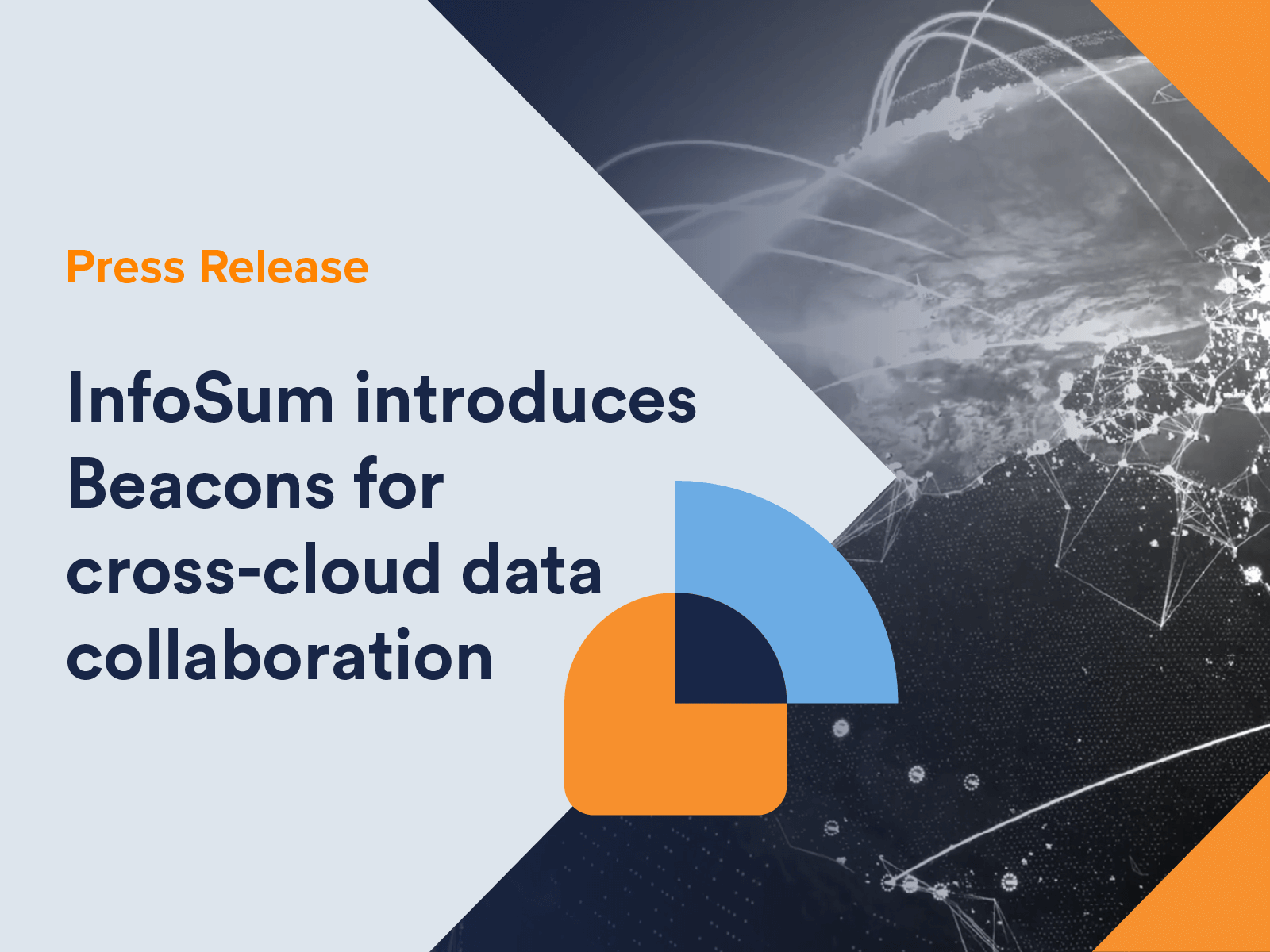Our last blog explored how and why organizations should focus on their first-party data strategy. But what if an organization doesn't have any first-party data? Many brands consumers are most familiar with have no direct relationship with their customers. Our homes are full of products from leading consumer packaged goods (CPG) and consumer electronics brands, but we purchase these products through large retailers rather than directly from them.
Another wrinkle that can limit an organization's ability to use the data they have for marketing purposes is consent. Many organizations hold robust first-party datasets but lack the appropriate consent framework to use that data, for example, financial institutions such as retail banks or insurance providers.
Of course, these organizations should focus on collecting consented first-party data, exploring creative ways to build direct relationships with their customers and providing a fair value exchange that warrants consumer consent. However, through another company's first-party data, they will find full-scale value - enter data collaboration and second-party data.
Before we go much further, a quick reminder - second-party data comes from using another company's first-party data, made available through a data partnership. As with all first-party data, it's the information that the data owner collects on people interacting directly with their online and offline assets (website, app, etc.).
Tapping into second-party data for enhanced consumer insights
For all customer-centric organizations, it is vital to understand your customer's behavior and characteristics clearly. It feeds into the marketing you plan, the products you develop, where you sell those products and even the overarching perception of that organization in market.
Let's use CPGs as our example. For these organizations with little-to-no direct relationships with their customers, one of the most valuable data sources they, and the agencies that represent them, can tap into is shopper data from retailers and loyalty card programs.
This data allows CPGs to understand their customers better and use those enhanced consumer insights to deliver better data-driven experiences.

At InfoSum, we have already seen these partnerships in action and have been excited to see non-CPG brands tapping into the second-party data opportunity. We've enabled a gaming publisher and gaming platform to connect their proprietary datasets to understand their shared customers better and ultimately uncover a deeper understanding of their games' usage. We've also helped a major UK sports team collaborate more effectively with their sponsors to validate the synergy between their shared customer base to maximize the value exchange delivered through targeted offers.
But why stop at one second-party data source? You can dig deeper into your current customer profile by layering multiple second-party and third-party data sources. Understanding not only the other products those individuals have the propensity to purchase but also by layering:
- consumption data from CTV providers to understand what TV shows they enjoy - not only can this inform the creation of audiences, more on that in a minute, but it also informs potential sponsorships and product placement opportunities; with
- listening data from a music streaming service to understand what music is popular with your customers - informing the track licensed for your next commercial; or
- purchase level data such as intent, basket size, and historical transactions from trusted consumer insights and analytics provider to fine-tune campaign offers or messaging; with
- demographic and psychographic attributes from a leading identity resolution platform to produce more accurate and richer audience profiles for acquisition or measurement.
Building high-value custom audiences
Once a more complete and holistic customer understanding has been created, this intelligence can be leveraged to build customized high-value audiences with media owners. For CPGs, collaborating with retailers to access their shopper data, for example, via a retail media network, presents the opportunity to get in front of their potential customers as close to the point of sale as possible.
Importantly, the collaboration opportunities for CPGs and other consumer brands don’t end with the retailers who sell their products. Marketers can discover and activate targeted campaigns with greater scale and accuracy by taking their enhanced customer profile and matching that against the existing audience segments across multiple media partners. This approach allows marketers to finally reach the dream of delivering the right message to the right audience at the right time without sacrificing privacy or exposing proprietary media strategy.

As Peter Markey, CMO of Boots UK put it:
“The excitement of the sorts of partnerships we’re now able to do means that I genuinely get excited about the fact that we can get our message and our products in front of the right audience at exactly the right time. The stuff I’ve dreamed about doing as a marketer for 20+ years feels closer now.”
If we revisit our two gaming companies who collaborated to unlock enhanced customer insights, they were also able to leverage intelligence about game usage to optimize in-flight campaigns to deliver more impactful engagement and increase ROI. And the sports team? They could reach new high-value audiences by leveraging their sponsor’s data to reach complementary target profiles with co-branded activities.
Closing the loop on measurement with first and second-party data
Every marketer is tasked with accurately measuring the success of marketing activities, demonstrating return on investment (ROI) and maximizing return on ad spend (ROAS). As we head towards macroeconomic uncertainty, marketing budgets may need to be reduced, and individual partnerships may need to be refined to weather the storm. A simple and effective measurement strategy is crucial to determine where to make necessary changes or adjustments.
We have covered how brands with no direct relationship with their customers can plan more effective marketing campaigns with second-party data. But by measuring the true impact of those campaigns, whether it be lift, reach, or frequency, not only can an accurate ROI and ROAS be determined, but those insights can be quickly used to optimize future marketing campaigns reducing costs and amplifying performance.
Suppose we continue to use CPGs as our example. In that case, these brands can create a multi-party data clean room using InfoSum to bring together exposure data from their media partners with conversion and point-of-sale data from their retail partners. This multi-party analysis empowers them to safely and transparently calculate the incremental lift of their targeted campaigns without any party exposing or sharing their data. These measurement calculations can be further enhanced by connecting second-party data from any number of partners within the InfoSum platform.

For our two gaming companies, the gaming platform was able to connect their in-game purchase data with the gaming publisher’s campaign exposure data to quickly and easily determine the incremental lift of their collaboration. And our sports team used InfoSum to safely connect their outcome data with their sponsors' outcome data and any retailers they work with to measure the impact on in-store sales generated by their co-branded campaigns.
This transparent approach to measurement ensures that brands can accurately determine the impact of individual marketing campaigns using valuable first-party data without having to share or expose any data. For more information on privacy-first incrementality and other secure measurement solutions from InfoSum download our guide.
Unlocking opportunities with data clean rooms
Accessing these second-party data sets relies upon those data owners making them available. But as a highly valuable and sensitive data asset, and against an ever-evolving data privacy regulation, customer-centric organizations are no longer willing to share that data outside their four walls.
Data clean rooms in their current form have come to market at the optimum time. They enable brands, retailers, media owners, data owners, identity vendors and media agencies to seamlessly and safely collaborate across unlimited data sources with complete protection. Importantly, even for organizations with no first-party data, they can use data clean rooms to safely and securely access insights from their partners.
With this technology, these various organizations can now resolve identities across datasets, unlock new and valuable consumer insights, build and activate smarter audience-based campaigns at scale, and measure the success of those campaigns.
Download our infographic, Using second-party data in a clean room, for a quick reference guide to second-party data. If you want to dig a little deeper, download the Ultimate guide to data clean rooms for everything you need to know about the data clean room trend and how they can empower you today.







